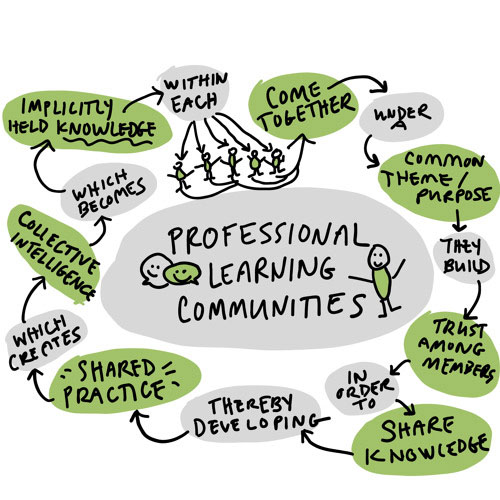
Professional Learning Communities

Lalor North Primary School has an organisational design that is built on a Professional Learning Communities (PLC) structure. We enjoy working together and have a strong sense of collective efficacy. Teachers and Education Support Staff have a shared purpose to support the learning of all students at our school.
Lalor North Primary School completed the PLC training in 2019. This training invigorated our school and strengthened our moral purpose as a staff. We, as a staff have a strong commitment to PLC with the confidence in each other as we go from strength to strength on our improvement journey. We work professionally and we are committed to continuous learning through our PLC inquiry cycles which have strengthened our collective efficacy and continue to improve our student learning outcomes.
We have a clear and deliberate intent that reflects the following principles….
A focus on Learning
A focus on Collaboration
A focus on Student Learning Growth
What are Professional Learning Communities?
PLC is an approach to school improvement where groups of teachers work collaboratively at the school level to improve student outcomes. Professional learning communities start from a simple idea that students learn more when their teachers work together.
Building a PLC is a proven way for schools to increase student learning by creating a culture that is:
- focussed on continuous improvement by linking the learning needs of students with the professional learning and practice of teachers
- committed to professionalism
- fuelled by collaborative expertise.
The 10 Principles of Effective PLCs
Found in all effective PLCs are 10 principles that bring together the best available research on school improvement:
- Student learning focus: School improvement starts with an unwavering focus on student learning.
- Collective responsibility: For every child to achieve, every adult must take responsibility for their learning.
- Instructional leadership: Effective school leaders focus on teaching and learning.
- Collective efficacy: Teachers make better instructional decisions together.
- Adult learning: Teachers learn best with others, on the job.
- Privileged time: Effective schools provide time and forums for teacher conversations about student learning.
- Continuous improvement: Effective teams improve through recurring cycles of diagnosing student learning needs, and planning, implementing and evaluating teaching responses to them.
- Evidence driven: Effective professional learning and practice is evidence based and data driven.
- System focus: The most effective school leaders contribute to the success of other schools.
- Integrated regional support: Schools in improving systems are supported by teams of experts who know the communities they work in.
Collective efficacy is defined as a group's shared beliefs about their collective capability to promote successful student outcomes within their school and is tied to collective action, the ability to make things happen.
Gordon Hoy, Hoy, 2000

 03 9465 4922
03 9465 4922